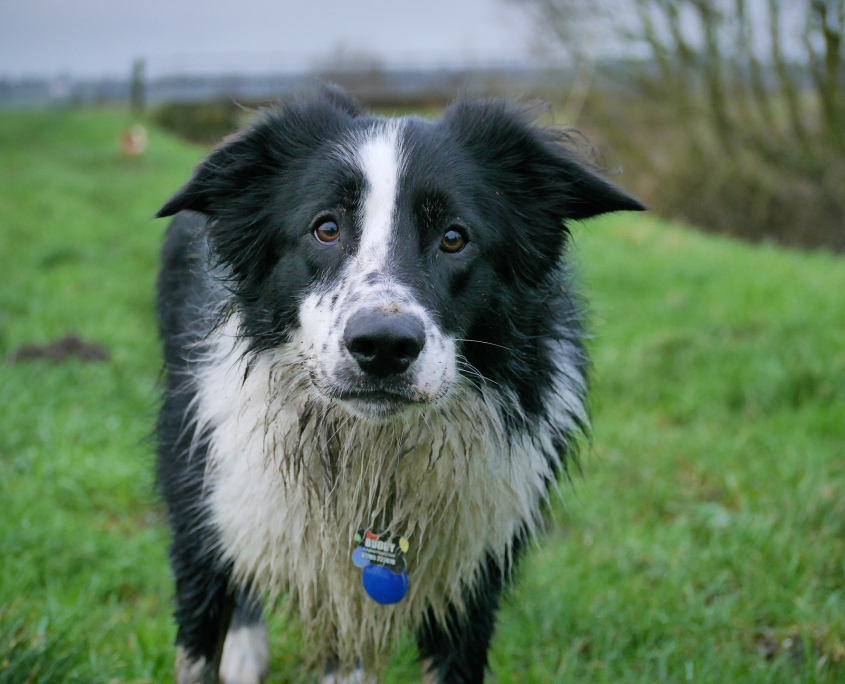August is Pet Dental Health Month
Did you know that dental disease is the most prevalent disease in adult pets? In fact, 80% of dogs and 70% of cats over age three have some form of dental disease!
Without proper care, plaque forms on our pets’ teeth and causes gingivitis. Eventually, the infection gets into the tooth roots and the bones that support the teeth. This is painful and will cause teeth loss. Bacteria can also enter the bloodstream.
The good news is that this is all preventable.
If you only have your pet’s teeth checked once a year, then this is the time to do it!

So what causes dental disease?
Just like with us, dental disease is caused by plaque.
Saliva, bacteria, and food particles combine to form plaque on the surface of the tooth. If not removed, this plaque mineralizes in the presence of salivary calcium and forms tartar, a hard brown deposit on the tooth surface. Tartar doesn’t disappear with simple brushing of the teeth but instead requires scaling by your veterinarian.
Plaque can also cause gingivitis (red and swollen gums) and is the first stage of periodontal disease. Gingivitis can lead to a loss of appetite and painful chewing.
Bacteria will gradually destroy the ligaments and bones that support the teeth, and the risk of abcessation is very high. Eventually, the tooth will fall out.
At this advanced stage, the bacteria can spread to the lungs, liver, kidney, and heart, causing an infection there. Periodontal disease is painful, even if your dog or cat may not show it.
Recognising the signs of dental disease
Symptoms of dental disease to look out for include:
- Bad breath
- Excessive salivation or drooling
- Yellow and brown tartar deposits on the teeth – normal teeth should always be white
- A red line along the gum line (gingivitis)
- Difficulty eating
- Pain around the head when petting, or pawing at the mouth
- Facial swelling
- Bleeding gums.
If any of these symptoms are observed in your pet, please phone us to make an appointment to have your pet’s teeth checked out.
Preventing dental disease in your pet
Fortunately, this common disease is usually preventable. There are lots of things that you can do to make sure that your pet maintains healthy teeth and gums. Here are some suggestions:
- Learn to check your pet’s teeth regularly (including the back teeth). Redness of the gums, a thick build-up of tartar on the teeth, or bad breath all indicate that it’s time to see the vet – as soon as possible.
- Feed raw bones 2-3 times per week – this is the most natural way to clean the teeth. Chewing through bone and cartilage, and tearing the meat off the bone, exercises and cleans the entire tooth, right up to the gum line. Feeding the bones with some raw meat on is okay, but good hygiene is important. Never feed cooked bones. Cooked bones are less beneficial to the teeth and can create problems such as constipation or even intestinal obstruction. Whilst it is still possible for raw bones to become lodged in your pet’s mouth, this is uncommon and easily fixed, so don’t be afraid to feed raw bones. You should avoid large hard bones like beef femurs, as well as any split long bones, which can sometimes fracture the teeth.
- Have your vet check the teeth at least once a year. We will do this as part of your pet’s annual examination and vaccination. If necessary, we will recommend appropriate treatment to restore your pet’s teeth and gums to good health.
- Try brushing your pets’ teeth. Brushing will be easier if you begin while your pet is still young, although you may have success even if you start with an older dog or cat, provided they don’t already have painful gum disease. You should brush your pet’s teeth at least once a week, but once a day is best. Call in to see us for a free demonstration on how to brush your pets’ teeth and obtain some special pet-friendly toothpaste and brushes.
- Diet is an important part of dental care. Bones have already been discussed, but many people think that dry food will clean their pet’s teeth. It won’t because dry foods crumble too readily and clean only the tip of the teeth, not right up to the gum line where the problem lies. Prescription dental diets such as Royal Canin ‘Dental’ and Hills T/d have been specially formulated to gently abrade the teeth during chewing. In addition, Royal Canin ‘Dental’ contains sodium polyphosphate which traps calcium in the saliva so the mineralisation of plaque into tartar can’t occur.
- Artificial Chews and Bones. We offer a range of dental chews, from Greenies to low-fat treats for animals with sensitive stomachs. Giving dental chews often is highly beneficial—usually at least every second day.
- We also stock antibacterial gels that kill plaque-producing bacteria in the same way Listerine mouth wash does for us. It is suitable for animals that will not chew or allow brushing. It is applied to the teeth and gums either from your fingertip or direct from the bottle.
No one method will be the answer for every pet, but we can help you select the product or combination of products that are best for you and your pet’s needs.



